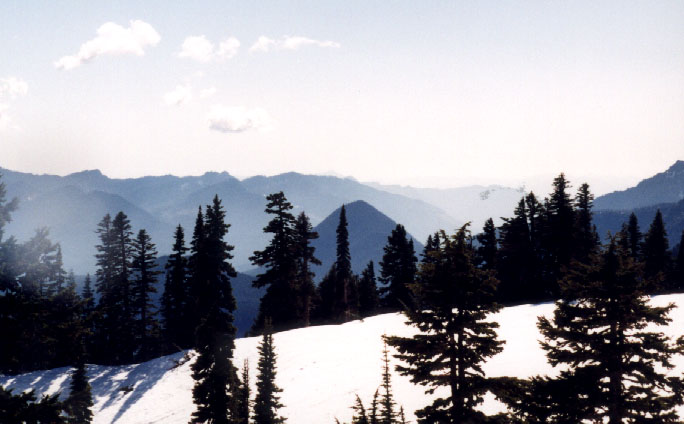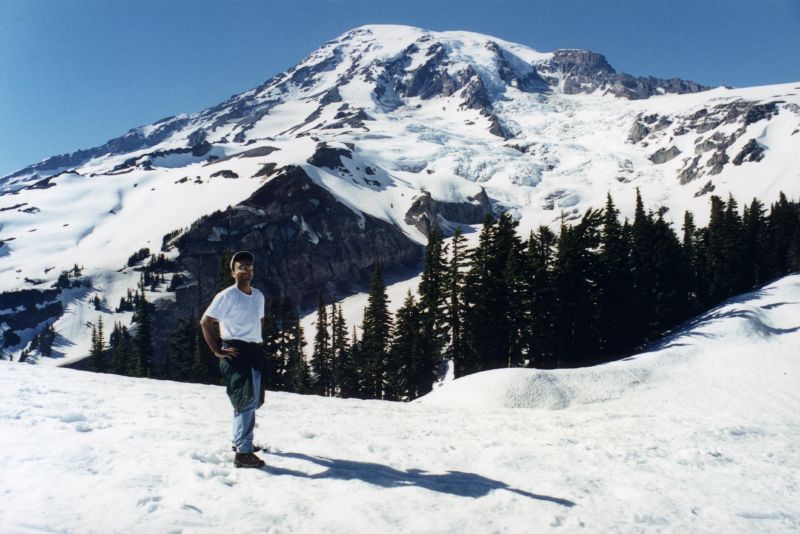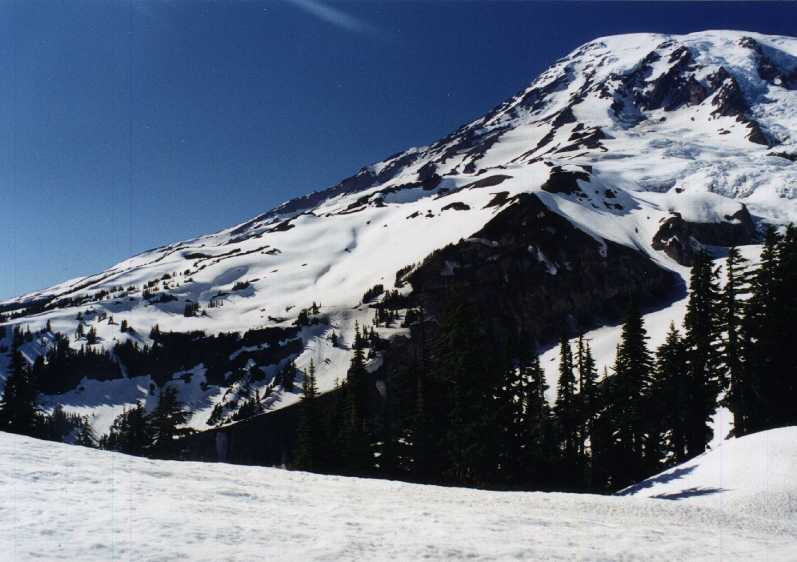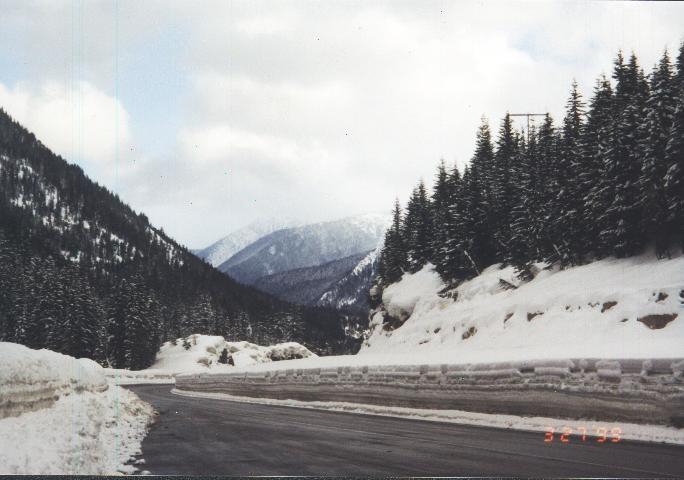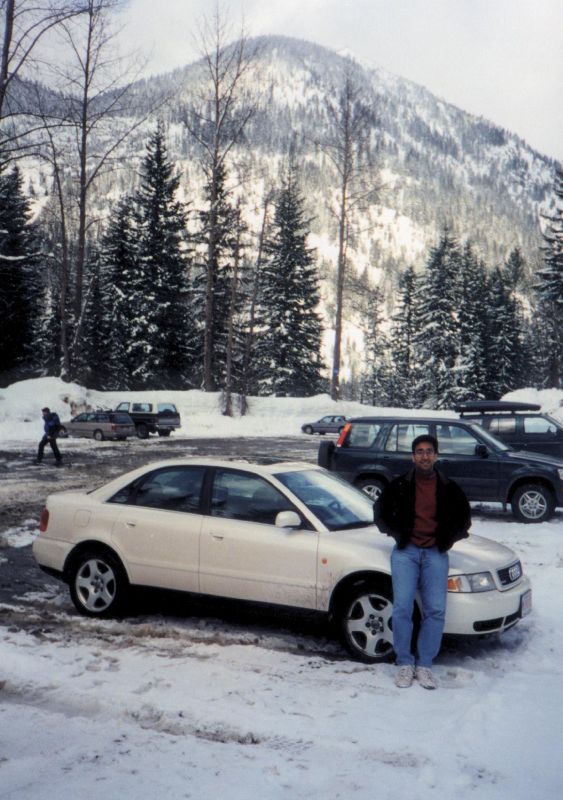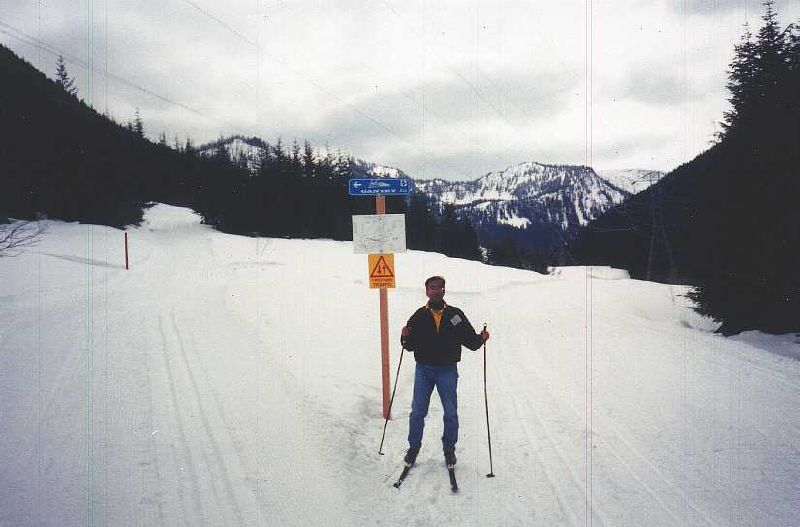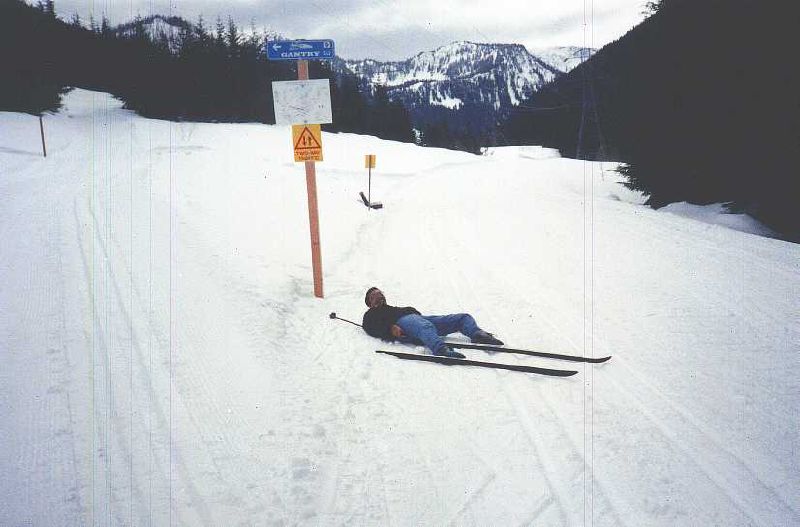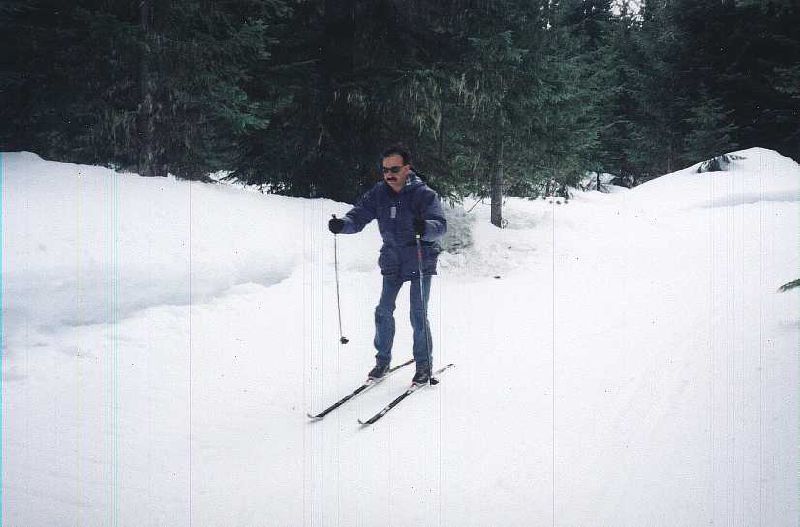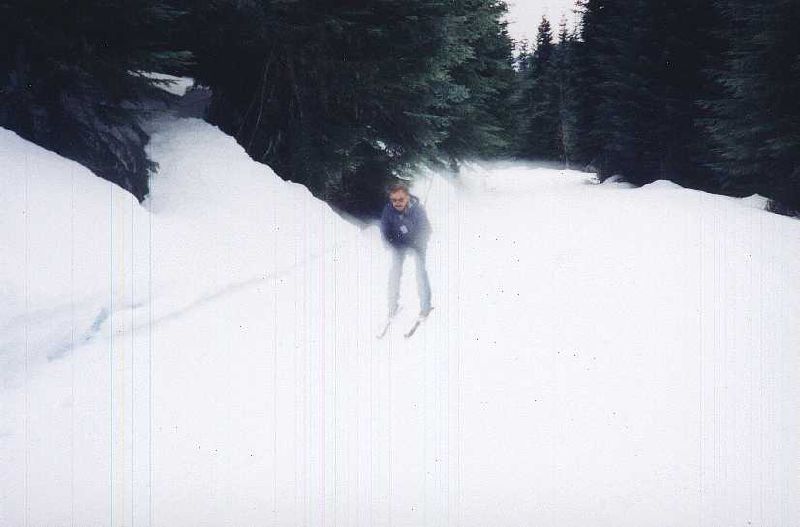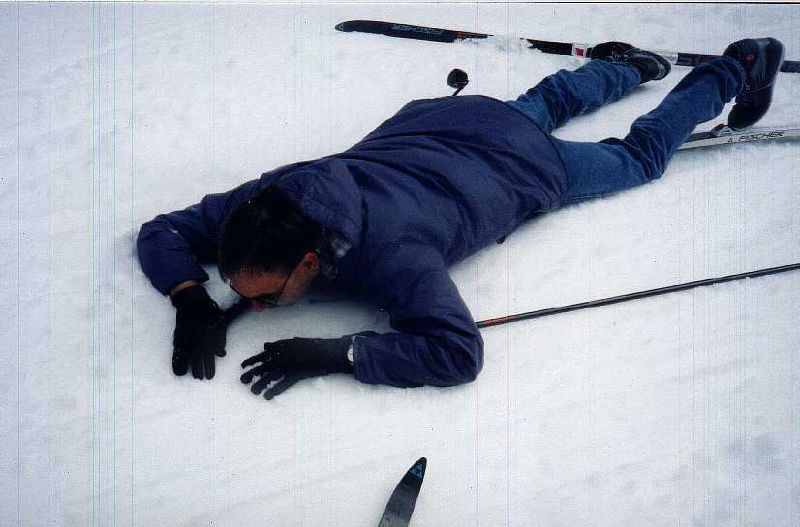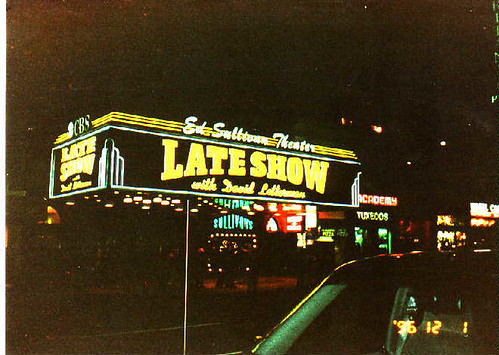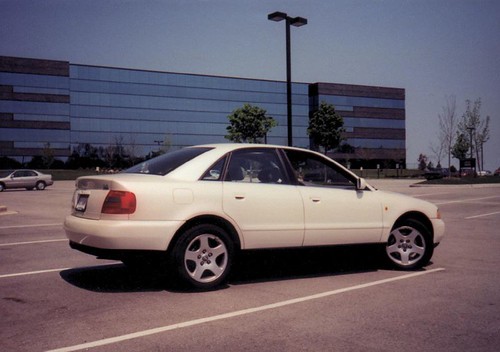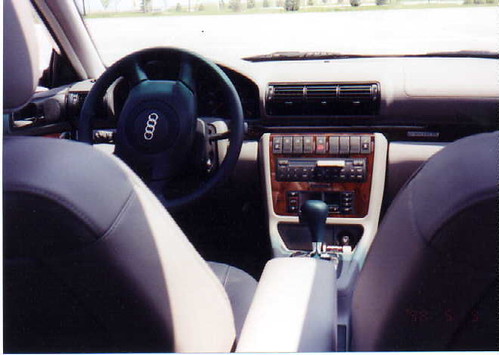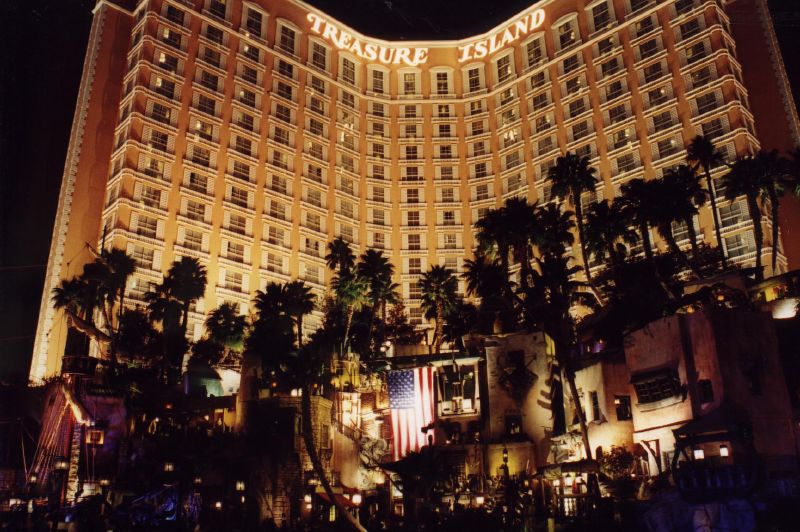
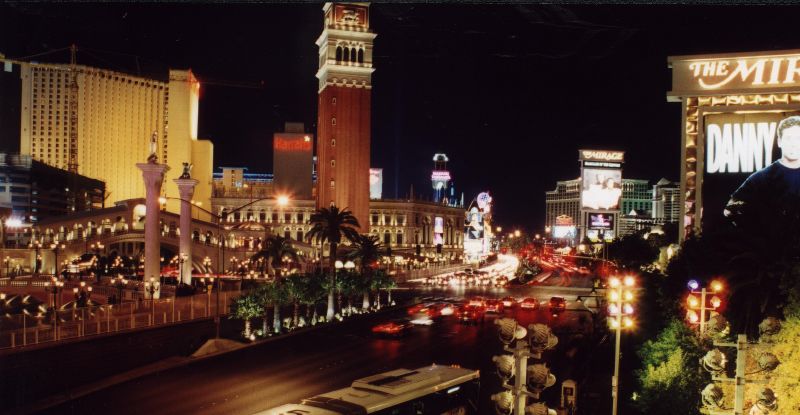
My stay in the US gave me an epiphany (nope... didn't give me enough money, but that's a different story, and anyway you can never have enough money, can you? :) ) - if someone asked me where one should go to sample the US, in my opinion there are three places (if you had to choose no more than three), and they are New York city, Las Vegas, and Grand Canyon. Each represents a different side of the country.
According to Wikipedia, "Las Vegas is marketed as The Entertainment Capital of the World, also commonly known as Sin City or Vice City, due to the popularity of legalized gambling, availability of alcoholic beverages at any time (as is true throughout Nevada), and various forms and degrees of adult entertainment. The city's glamorous image has made it a popular setting for films and television programs." You can read many other fascinating facts about the city at the Wikipedia site
here, or the
official city site.
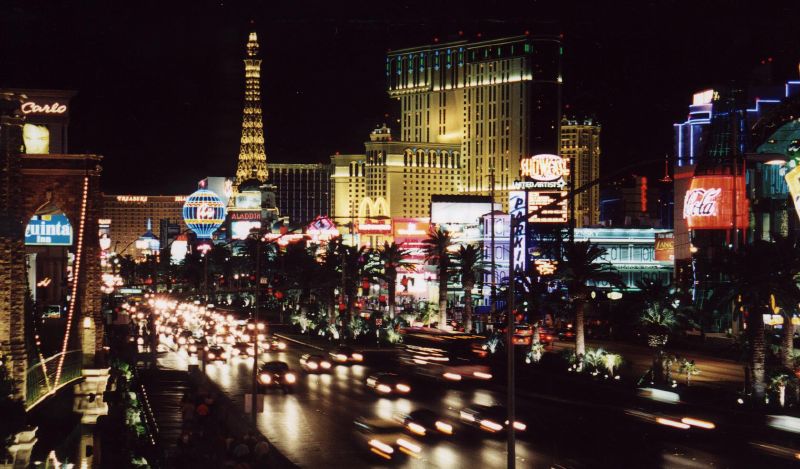
The hotels there are huge - I mean simply huge... thousands of rooms, in excess of 4000 rooms for a hotel like Caesar's Palace. And others like Bellagio, Excalibur, Luxor, Mandalay Bay, MGM Grand, The Mirage, and many more along the 3 mile 'strip'. No wonder so many conventions are held there - the infrastructure exists to support tens of thousands of people descending there... hotels, entertainment, food, and more...
In the photo below of
Treasure Island (
wikipedia link), you will notice a flag of the US in the center at the bottom. That's because I shot this photo in 2001; just months after the 9-11 attacks, so the Stars and Stripes was pretty much omnipresent.
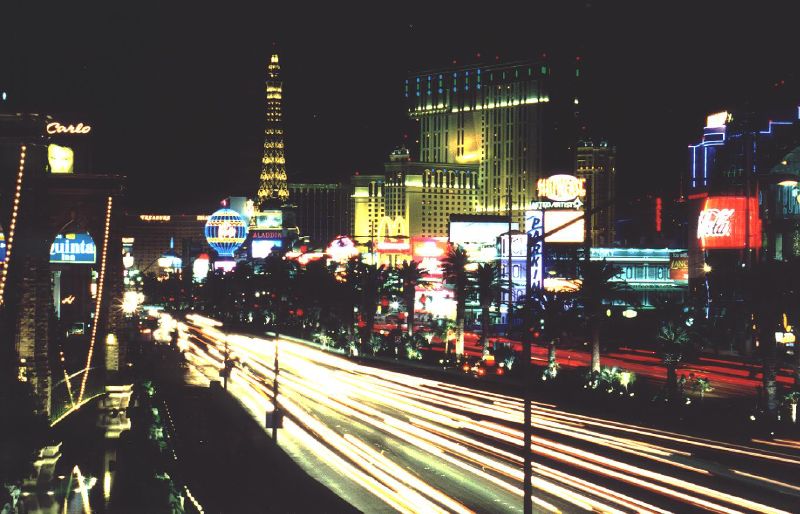
Now there is nothing different between the two photographs below - both were shot within seconds of each other, with the same camera, and without a tripod. The second one has a 6 second exposure, while the first one has a much smaller one. The reason I shot the second photo was that I found a place to rest my camera for the long exposure shot.
New York New York is made to resemble the New York city skyline. On
Wikipedia you learn a lot more:
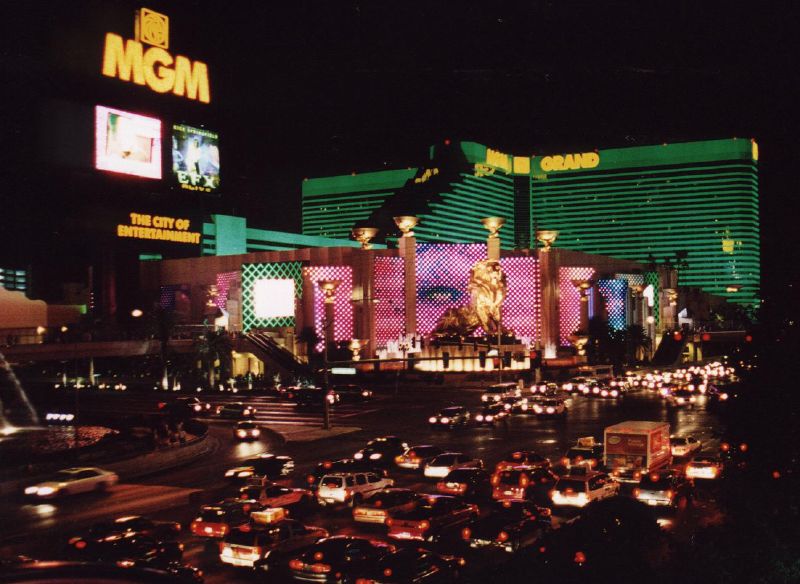
New York-New York uses the New York City theme of its name in many ways. Its architecture creates an impression of the New York City skyline; the hotel includes several towers configured to resemble New York City skyscrapers, such as the Empire State Building and the Chrysler Building. In front of the property is a pool representing New York Harbor, with a 150 ft (46 m) tall (half-scale) replica of the Statue of Liberty, a roller coaster, and replicas of the Brooklyn Bridge, Soldiers and Sailors Monument, the Whitney Museum of American Art, and Grand Central Terminal, among other well-known structures. Within the resort, particular gambling areas, bars, eating areas and meeting rooms are named after New York City neighborhoods or landmarks. The main casino area, for example, is named after Central Park, while the "Village Eateries" food court is modeled after New York City's Greenwich Village, even including real menus from New York Chinese takeout restaurants taped to the doors of the mock apartment buildings. New York-New York uses the trademarked slogan "The Greatest City in Las Vegas".
And this below is the
Excalibur.
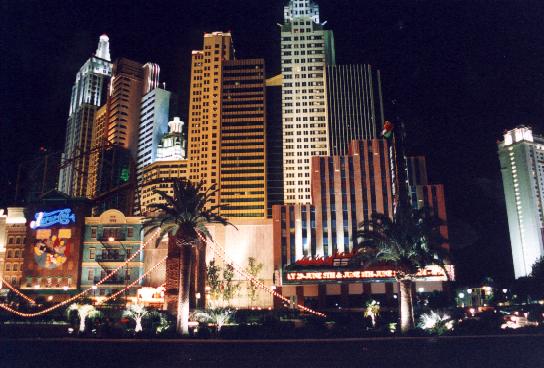
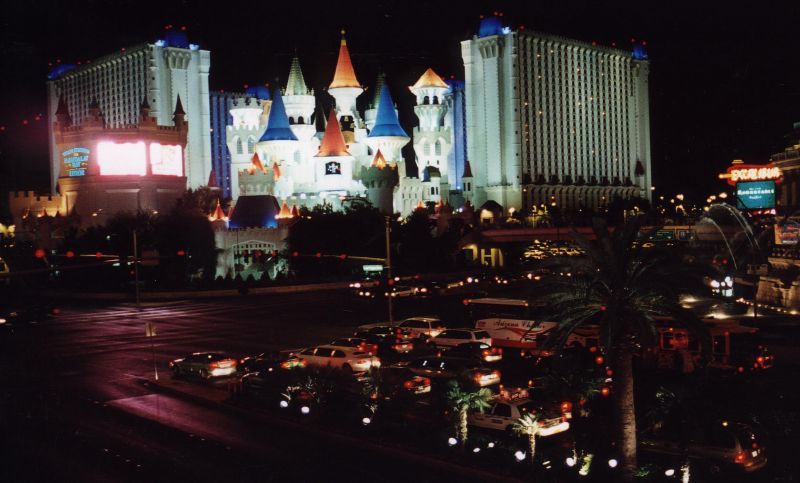
Every single attraction there is meant to make you spend money and time - the restaurants, the shows (the Blue Man Group for e.g. and some of the shows cost upwards of a hundred dollars, per person), the slot machines, blackjack tables - and is a stunningly impressive microcosm of capitalism itself in the mecca of capitalism - the USA. Competition is intense - tens of thousands of hotel rooms along a 3 mile strip - and you can pretty much write reams and reams of paper on the value of differentiation, creating a credible monetization strategy, positioning, and what not...
Someone once told me that there are no clocks in any hotel there - you are supposed to lose all sense of time in the hotel, especially when gambling. It's heady, gawdy, impressive, fascinating, alluring, and more. And the contrast is made more vivid by the presence the Grand Canyon - which is a few hours drive away (at least to Flagstaff - see
this and
this site).
© 2006, Abhinav Agarwal (अभिनव अग्रवाल). All rights reserved.


















 (see my earlier posts -
(see my earlier posts - 






